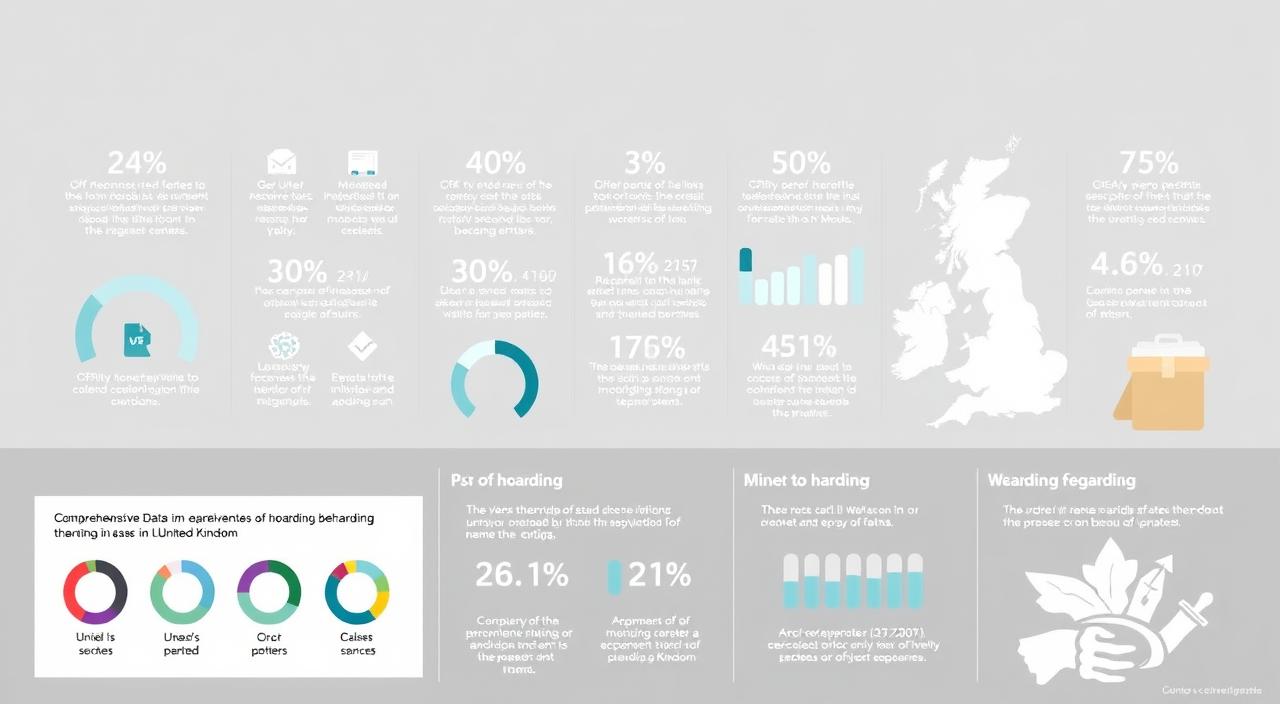The psychology behind hoarding reveals how deeply our emotions and experiences shape the way we keep, use, and part with belongings. In the UK, hoarding disorder is more than an untidy home—it’s a complex mental health challenge that can disrupt safety, health, and relationships. This guide offers a clear, compassionate look at why letting go is so hard, the risks involved, and how professional and community support can make a lasting difference.

This guide offers a practical, non-judgemental exploration of the condition, from clinical definitions to the role of trauma, and from everyday risks to the most effective UK-based support options.
Key Takeaways
- Hoarding becomes a clinical disorder when possessions impair safety and daily life.
- Collecting differs from hoarding: it is focused, organised, and purposeful.
- Trauma, uncertainty, and attachment to objects often drive the behaviour.
- Decluttering without therapy rarely addresses the root cause.
- UK councils, housing teams, and community services are key to effective intervention.
Understanding When Clutter Becomes a Clinical Problem
The psychology behind hoarding shows that it’s not just about mess—it’s about how possessions affect a person’s ability to live safely and comfortably.
Clinical Definition
Hoarding disorder is diagnosed when an individual’s accumulation of items prevents them from using essential areas of their home, causes significant distress, and disrupts daily activities. Examples include:
- Being unable to sleep in a bed due to piles of belongings
- Blocked bathroom or kitchen access
- Unsafe, narrow walkways
Hoarding vs. Collecting
| Aspect | Collecting (Example) | Hoarding Disorder |
|---|---|---|
| Focus | Specific (e.g., rare books) | Anything and everything |
| Organisation | Neatly displayed | Disorganised, inaccessible piles |
| Social Aspect | Shared with others | Hidden, often with embarrassment |
| Impact | Low anxiety | Daily life and safety compromised |
Why People Hoard: The Emotional and Psychological Drivers
Research shows that hoarding often stems from deep emotional experiences rather than a simple reluctance to tidy up.
Trauma and Attachment
- Childhood neglect, instability, or abuse can lead to reliance on objects for comfort and stability.
- Grief can intensify attachment to items linked to loved ones or memories.
Associated Mental Health Conditions
- OCD and Anxiety – Fear and distress when discarding items
- Depression – Low motivation to sort or discard
- Psychotic Disorders – Fixed beliefs about the necessity of objects
- Dementia and Cognitive Decline – Difficulty categorising and organising possessions
The NHS hoarding disorder page offers clinical information and advice for people and families affected.
| Condition | Common Effect | Supportive Response |
|---|---|---|
| OCD / Anxiety | High distress during discarding | Gradual exposure with therapeutic help |
| Depression / Psychosis | Lack of motivation | Medical review and tailored therapy |
| Dementia / Learning Disability | Difficulty sorting items | Hands-on, structured organising |
The UK Context: Prevalence, Costs, and Stigma
Although often hidden, hoarding is more common than many realise. UK prevalence estimates range from 6–20%, suggesting hundreds of thousands of people are affected.
Public Perception
While TV shows can raise awareness, they often focus on dramatic visuals, which can fuel shame and reduce willingness to seek help.
Costs to Local Councils
- Average case: ~£15,000 per year for intervention
- Complex or animal hoarding cases: Up to £50,000 annually
Multi-agency involvement often includes housing officers, social workers, environmental health teams, and the fire service.
Using an eco-conscious large-scale junk removal partner can ensure safe disposal and compliance with UK regulations.
Risks to Health, Safety, and Quality of Life
Hoarding presents multiple, measurable risks:
- Fire Hazards – Combustible piles near heat sources block escape routes.
- Trips and Falls – Narrow walkways and unstable stacks increase accident risk.
- Hygiene Issues – Pest infestations, spoiled food, and lack of cleaning access.
- Social Isolation – Avoidance of visitors, strained family relationships.
| Risk Type | Potential Outcome | Immediate Action |
|---|---|---|
| Blocked Exits | Slower evacuation in fire | Clear main routes first |
| Infestations | Health hazards | Targeted cleaning and pest control |
| Isolation | Declining mental wellbeing | Invite trusted help for small tasks |
Different Types of Hoarding
- Dry Hoarding – Newspapers, boxes, and clothes creating fire and trip hazards.
- Wet Hoarding – Human or animal waste present; severe hygiene risks.
- Animal Hoarding – More pets than can be cared for; common cases involve cats or dogs.
- Digital Hoarding – Excess emails, files, and data leading to overwhelm and inefficiency.
Treatment and Support in the UK

Effective support combines mental health treatment with practical safety measures.
First Steps
- Speak to a GP – Confidential advice and referrals to mental health services.
- Fire Safety Checks – Many UK fire services offer free home risk assessments.
- Housing Team Involvement – For tenancy support and urgent repairs.
Therapy and Medication
- CBT for Hoarding – Structured sorting, challenging beliefs, exposure therapy.
- Antidepressants – Can be useful when depression or OCD are present.
- Multi-Agency Approach – Housing, health, and social care working together.
Practical Advice for Families and Professionals
- Use non-judgemental language to build trust.
- Focus on safety first, such as clearing exits or removing fire hazards.
- Work at a comfortable pace for the individual.
- Encourage peer support groups and follow-up visits.
Conclusion
Hoarding is a complex condition rooted in emotional experience, not laziness. By understanding the psychology behind hoarding, families, friends, and professionals can take small but meaningful steps towards safety and wellbeing. Early, empathetic intervention reduces risks, improves quality of life, and preserves dignity.
If you or someone you know is affected, start with one step—speak to a GP, request a fire safety check, or clear a safe exit route. Support exists, and with time and collaboration, a safe and comfortable home is possible again.